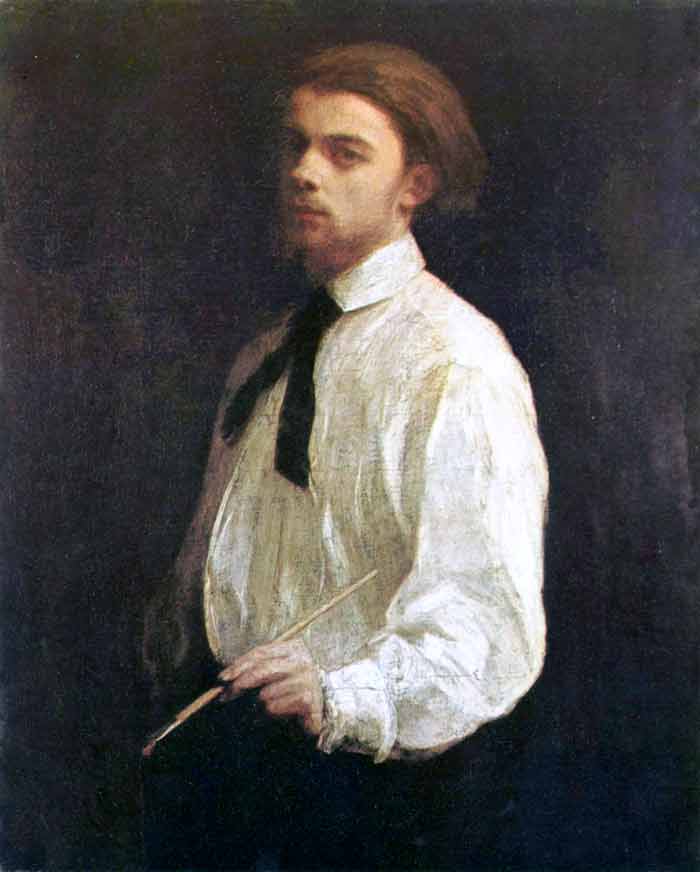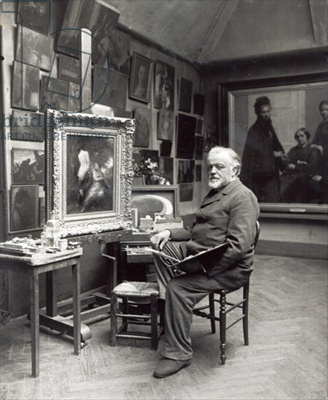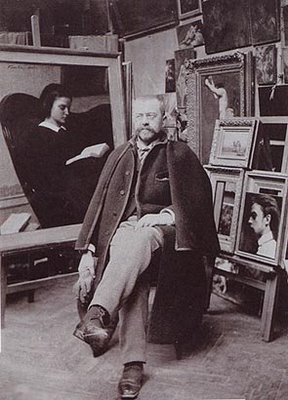French Portrait Artist in his studio: Henri Fantin-Latour

Henri Fantin-Latour (14 January 1836 – 25 August 1904) was a French painter and lithographer best known for his flower paintings and group portraits of Parisian artists and writers.
As a youth, he received drawing lessons from his father, who was an artist. In 1850 he entered the Ecole de Dessin, where he studied with Lecoq de Boisbaudran. After studying at the École des Beaux-Arts in Paris from 1854, he devoted much time to copying the works of the old masters in the Louvre. Although he befriended several of the young artists who would later be associated with Impressionism, including Whistler and Manet, Fantin’s own work remained conservative and classical in style.
Whistler brought attention to Fantin in England, where his still-lifes sold so well that they were “practically unknown in France during his lifetime”. In addition to his realistic paintings, Fantin-Latour created imaginative lithographs inspired by the music of some of the great classical composers.
In 1875, Henri Fantin-Latour married a fellow painter, Victoria Dubourg, after which he spent his summers on the country estate of his wife’s family at Buré, Orne in Basse-Normandie, where he died of lyme disease.
He was interred in the Cimetière du Montparnasse, Paris, France
Marcel Proust mentions Fantin-Latour’s work in In Search of Lost Time:
Many young women’s hands would be incapable of doing what I see there,’ said the Prince, pointing to Mme de Villeparisis’s unfinished watercolours. And he has asked her whether she had seen the flower painting by Fantin-Latour which had recently been exhibited. (The Guermantes Way)
His first major UK gallery exhibition in 40 years takes place at the Bowes Museum in 2011






chi lavora nel mondo dell’arte può capire quanto sia fortemente simbolico auto ritratto con oggetti ermetici o con figure allegoriche.
Il vero che diventa falso, il falso che diviene verosimile, come raccontare la storia vera?